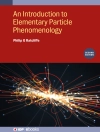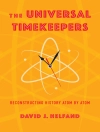ESSENTIALS OF SEMICONDUCTOR DEVICE PHYSICS
An introductory semiconductor device physics textbook that is accessible to readers without a background in statistical physics
I wish this book had been available when I needed to make a Semiconductor class myself a few years ago […] A very nice aspect is that some concepts (e.g. density of states) are explained in a way that I have not seen elsewhere. These types of unconventional approaches are very valuable for a teacher. (Bjorn Maes, University of Mons, Belgium)
[…] the author offers an accessible description of statistical analysis and adopts it to explain the core properties of semiconductors. […] [He] uses interesting metaphors and analogies to exemplify some of the most difficult notions, in an innovative and engaging way. (Andrea di Falco, University of St. Andrews, UK)
The subject of this book is the physics of semiconductor devices, which is an important topic in engineering and physics because it forms the background for electronic and optoelectronic devices, including solar cells. The author aims to provide students and teachers with a concise text that focuses on semiconductor devices and covers the necessary background in statistical physics.
This text introduces the key prerequisite knowledge in a simple, clear, and friendly manner. It distills the key concepts of semiconductor devices down to their essentials, enabling students to master this key subject in engineering, physics, and materials. The subject matter treated in this book is directly connected to the physics of p-n junctions and solar cells, which has become a topic of intense interest in the last decade. Sample topics covered within the text include:
* Chemical potential, Fermi level, Fermi-Dirac distribution, drift current and diffusion current.
* The physics of semiconductors, band theory and intuitive derivations of the concentration of charge carriers.
* The p-n junction, with qualitative analysis preceding the mathematical descriptions.
* A derivation of the current vs voltage relation in p-n junctions (Shockley equation).
* Important applications of p-n junctions, including solar cells
* The two main types of transistors: Bipolar Junction Transistors (BJT) and Metal Oxide Semiconductor Field Effect Transistors (MOSFET)
For students and instructors, it may be used as a primary textbook for an introductory semiconductor device physics course and is suitable for a course of approximately 30-50 hours. Scientists studying and researching semiconductor devices in general, and solar cells in particular, will also benefit from the clear and intuitive explanations found in this book.
Inhoudsopgave
Preface
1 Concepts of Statistical Physics
1.1 Introduction
1.2 Thermal Equilibrium
1.3 Partition function – Part I
1.4 Diffusive equilibrium and the chemical potential
1.5 The partition function, Part II
1.6 Example of application: energy and number of elements of a system
1.7 The Fermi-Dirac distribution
1.8 Analogy between the systems ‘box’ and ‘coins’
1.9 Concentration of electrons and Fermi level
1.10 Transport
1.11 Relationship between current and concentration of particles (continuity equation)
1.12 Suggestions for further reading
1.13 Exercises
2 – Semiconductors
2.1 Band Theory
2.2 Electrons and holes
2.3 Concentration of free electrons
2.4 Density of states
2.5 Concentration of holes and Fermi level
2.6 Extrinsic semiconductors (doping)
2. 7 Exercises
3 Introduction to semiconductor devices: the p-n junction
3.1 p-n junction in thermodynamic equilibrium – qualitative description
3.2 p-n junction in thermodynamic equilibrium – quantitative description
3.3 Systems outside thermodynamic equilibrium: the quasi-Fermi levels.
3.4 Qualitative description of the relationship between current and voltage in a p-n junction
3.5 The current vs voltage relationship in a p-n junction (Shockley’s equation)
3.6 Suggestions for further reading
3.7 Exercises
4 Photovoltaic devices (mainly solar cells)
4.1 Solar cells and photodetectors
4.2 Physical principles
4.3 The equivalent circuit
4.4 The I x V curve and the fill-factor
4.5 Efficiency of solar cells and the theoretical limit
4.6 Connections of solar cells
4.7 Suggestions for further reading
4.8 Exercises
5 Transistors
5.1 The Bipolar Junction Transistor (BJT)
5.1.1 Physical principles of the BJT
5.1.2 The beta parameter and the relationship between emitter, collector and base currents
5.1.3 Relationship between IC and VCE and the Early effect
5.1.4 The BJT as an amplifier
5.2 The MOSFET
5.2.1 Physical principles
5.2.3 Examples of applications of MOSFETS: logic inverters and logic gates
5.3 Suggestions for further reading
5.4 Exercises
Appendix: Geometrical interpretation of the chemical potential and free energy
Over de auteur
Emiliano R. Martins obtained his Ph D in 2014 from the University of St. Andrews (UK) in the field of photonics, which deals with the interaction between light and matter in semiconductor devices. His research field involves solar cells and other optoelectronic devices and he has been teaching a course on semiconductor device physics since 2016 at the University of São Paulo in Brazil. He has written unpublished books for other undergraduate disciplines that he teaches, including signals and systems and digital signal processing.












